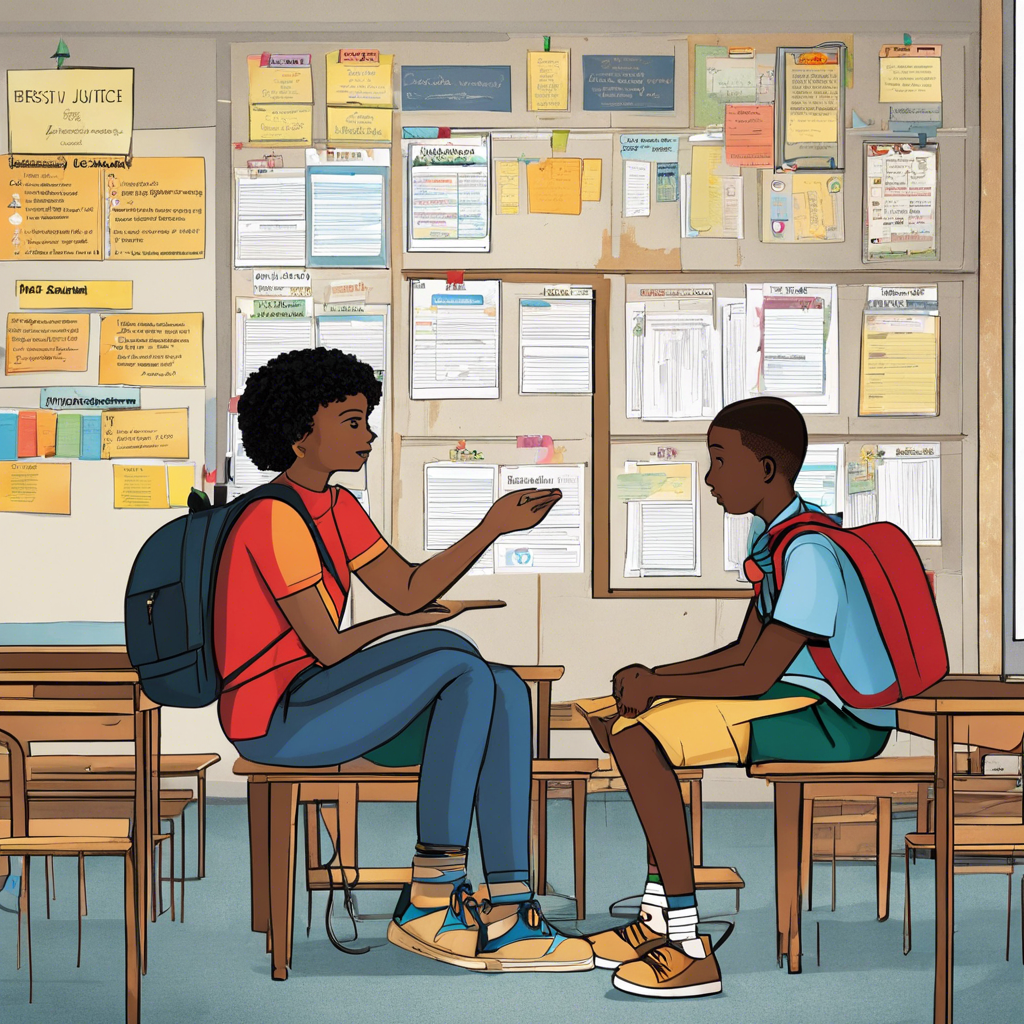Exploring the impact of restorative justice in schools, reducing suspensions and improving student well-being.
Restorative justice practices are increasingly being implemented in schools as an alternative approach to traditional disciplinary methods. This shift is driven by a growing recognition of the adverse effects of punitive measures on student well-being and academic outcomes. The aim of restorative justice is to foster a sense of community, repair harm caused by conflicts or misbehaviors, and empower students to take responsibility for their actions. This article examines the effectiveness of restorative justice practices in schools, exploring their impact on reducing suspensions, improving student behavior, and promoting a positive school climate.
The Rise of Restorative Justice in Schools
Schools across the country are embracing restorative justice as a powerful tool to address discipline issues and create a more supportive learning environment. Unlike traditional disciplinary methods that often involve suspensions and other punitive measures, restorative justice focuses on repairing harm and restoring relationships. This approach has gained traction due to its potential to reduce exclusionary practices and promote positive behavioral changes.
The growing interest in restorative justice is evident in various educational settings. For example, [School A](https://www.edutopia.org/article/how-restorative-justice-helped-one-school-reduce-suspensions-90-percent), a middle school in California, successfully implemented restorative justice practices, resulting in a [90% reduction in suspensions](https://www.edutopia.org/article/how-restorative-justice-helped-one-school-reduce-suspensions-90-percent). This case study highlights the transformative power of restorative justice and its ability to foster a more inclusive and supportive school community. By prioritizing relationship-building and restorative conversations, the school created a safe space for students to learn and grow, both academically and behaviorally.
Impact on Suspension Rates
Reducing Disciplinary Actions
One of the most significant outcomes of restorative justice practices is the substantial decrease in suspension rates. Schools adopting this approach have witnessed a significant reduction in the number of suspensions, particularly for minor offenses. This shift is attributed to the focus on repairing harm rather than solely punishing misbehavior. By engaging students in restorative conversations, they are encouraged to take responsibility for their actions and understand the impact of their behavior on others.
Case Study: Transforming Disciplinary Outcomes
A notable example of this transformation can be found in a study by the National Institute of Justice. They examined the impact of restorative justice practices in a school district facing high suspension rates. The implementation of restorative justice led to a **43% decrease in suspensions** over three years. This remarkable outcome underscores the potential of restorative justice to create a more equitable and inclusive school environment.
Enhancing Student Well-being
Improved Behavior and Academic Performance
Restorative justice goes beyond reducing suspension rates; it also positively influences student behavior and academic success. When students actively participate in restorative processes, they develop essential social and emotional skills. These skills include conflict resolution, empathy, and effective communication, which contribute to improved behavior and a more positive school experience.
A Personalized Approach to Student Support
Restorative justice allows for a more personalized approach to student support. By engaging in restorative circles or conferences, students can express their feelings, clarify misunderstandings, and propose solutions collaboratively. This process empowers students to take ownership of their actions and encourages them to make positive choices.
Promoting Positive School Climate
The impact of restorative justice extends beyond individual students; it also contributes to a more positive school climate. Restorative practices foster a sense of community and shared responsibility among students and staff. By creating a safe and supportive environment, schools encourage open communication, understanding, and mutual respect.
Building a Strong School Community
- Encourages collaboration between students, teachers, and staff.
- Nurtures a culture of empathy and understanding.
- Fosters a sense of belonging and shared values.
Links to Explore Further
1. [Restorative Justice in Education: A National Perspective](https://www.iirp.edu/pdf/RJ-in-education-report.pdf) – A comprehensive report on the implementation and impact of restorative justice in schools across the United States.
2. [Restorative Justice Practices in Schools](https://www.nytimes.com/2020/02/20/learning/restorative-justice-practices-in-schools.html) – An article from The New York Times highlighting the benefits and challenges of implementing restorative justice in schools.
3. [Restorative Justice for Oakland Youth](https://rjoy.org/) – A non-profit organization dedicated to transforming schools and communities through restorative justice practices, with a focus on youth empowerment.
FAQs: Unlocking the Potential of Restorative Justice in Schools
What are the long-term benefits of restorative justice in schools?
Long-term benefits include improved student engagement, reduced recidivism rates, and enhanced teacher-student relationships. Students develop essential life skills, such as conflict resolution and emotional intelligence, which contribute to their overall success.
How can schools successfully implement restorative justice practices?
Successful implementation involves comprehensive staff training, buy-in from school leaders, and a commitment to fostering a restorative culture. Regular evaluation and adaptation are necessary to ensure the practices remain effective and relevant.
Are there specific challenges associated with implementing restorative justice in schools?
Challenges may include resistance to change, time constraints, and the need for additional resources. However, these challenges can be mitigated through proper planning, ongoing support, and a whole-school approach to implementation.
Conclusion: A Restorative Journey Towards Positive Change
Restorative justice practices have proven to be a powerful tool in transforming school disciplinary outcomes and creating a positive school environment. By prioritizing relationship-building, empathy, and restorative conversations, schools can significantly reduce suspension rates and foster a culture of responsibility and mutual understanding. The impact of restorative justice extends beyond disciplinary measures, positively influencing student behavior, academic performance, and overall well-being. As schools continue to embrace this approach, they lay the foundation for a more inclusive, supportive, and successful educational journey for all students.
